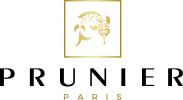In the producer's words: Laurent Sabeau, Director of Prunier's facilities.
Pioneers of French sturgeon farming, Laurent Sabeau and his wife Valérie set up one of the very first sturgeon farms at Montpon Ménesterol in Aquitaine.
Their passion was the start of Prunier's facilities, where all our 100% French caviar is now produced. It is also the supplier for the Prunier restaurant by Yannick Alléno (Paris 16ème).
From its origins to the present day, Laurent Sabeau takes us back over 30 years of savoir-faire.
1. Can you tell us a little about yourself?
My name is Laurent Sabeau and alongside my wife, Valérie I founded the Prunier workshop, based in Montpon-Ménestérol, France. When we started out in 1990, we were one of 4 pioneering sturgeon producers in the region.
Until the 1960s, sturgeon was fished in the Gironde estuary. However, the number of fish has steadily declined to the point where it became a protected species in France in 1982.
In the 1970s, the first sturgeon were imported from Russia for scientific purposes, with a view to breeding the Acipenser Baerii sturgeon in Aquitaine.
Since then, the company has grown steadily and now employs a team of 40 local people.
Above all, we owe this adventure to Mr Pierre Bergé, who believed in our project from the outset. The French caviar industry has developed and gained recognition through his support and funding.
2. Where did your passion for sturgeon farming come from?
It comes from my family, my father was a trout farmer. So I naturally turned to fish farming myself, as I'm also a biologist by training.
Valérie and I designed everything from A to Z: from the plans for the ponds to the choice of species and their feed.
At Prunier, we farm our sturgeon for their roe, not their meat. Everything we do is geared towards quality caviar and the health and welfare of our sturgeon, which are reared for an average of 10 years in our fish farm.
I'm particularly fond of the term 'Manufacture'; as its Latin origins mean 'made by hand' capturing the idea that we do everything by hand. Caviar is an exceptional product that requires time and precision. This dual expertise as breeder and producer is priceless and it is reflected in the taste of our caviar.
Prunier Manufacture and its ponds, located in the south of France, at Montpon-Ménesterol
3. Does the terroir have an impact on the production of Prunier caviar?
Yes, and it plays a vital role.
Over the last 30 years, the industry has acquired a greater understanding of sturgeon farming and has been able to measure the fundamental impact of the geography and history of the area on the production of its caviar.
It's a real asset that we want to promote to our customers by supporting the creation of the IGP Caviar d'Aquitaine label which denotes it was made in a protected region.
As a pioneering brand, Prunier is committed to taking part in tests carried out in collaboration with the local authorities on specific issues such as the use of water, for the region's common good.
Our fish farms are fed by water from various rivers, including the Adour in the Gers and the Isle in Dordogne. We are currently testing and monitoring the water to improve its quality before it is returned to the natural environment.
Michelin 3-star chef Yannick Alléno with our fish farmer Thomas Lipinski (in charge of the production site
at Montpon-Ménestérol) pictured with one of our sturgeon.
4. What are the main stages in the production of Prunier caviar?
Our sturgeon grow for an average of 10 years in our ponds before they are able to lay their precious roe. Human intervention is essential to determine, by eye, touch and taste, the right stage of maturity for caviar production. This means they retain a better texture during the salting process, a key stage in production, carried out by hand by our master blenders and salters.
Just as a cellar master blends his grape varieties, we have learnt to create different caviar using the same species of sturgeon.
We are particularly proud of our precision work for incredible taste.
Once it has been packaged in an Origin tin, the caviar is ready to mature, maturing time depends on the sturgeon species and recipe. Maturing allows the flavours to develop, much like a fine wine.
A Prunier Origine tin opened after maturing for several months at Manufacture Prunier.
5. What varieties of caviar are produced at Manufacture Prunier?
Since the very beginning, we have been producing Baeri caviar, the world-renowned French caviar par excellence.
In 2010, French law opened up sturgeon farming to other species. As a result, we were able to start breeding a new species: Acipenser gueldenstaedtii, a Russian fish that produces Oscietra caviar.
These two varieties complement each other in terms of taste:
Oscietra caviar has a lively, straightforward attack. It reveals itself from the first bite and improves with age. It is the caviar of choice of Michelin 3-star chef Yannick Alléno.
Baeri, on the other hand, is a smoother caviar with an exceptionally long finish.
6. How do you recognise good caviar? What flavours should you expect to taste?
As soon as you open the tin, the caviar should be appetising: it should be shiny and odourless. There should not be any stagnant liquid in the box.
When you insert the mother-of-pearl spoon, you'll hear that unmistakable sound.
On the palate, caviar must be fresh; revealing its local character, as it is the pure expression of its terroir.
That's why it's important to know where the caviar you're eating comes from.
A caviar from Aquitaine, for example, will reveal notes of walnut and almond.

